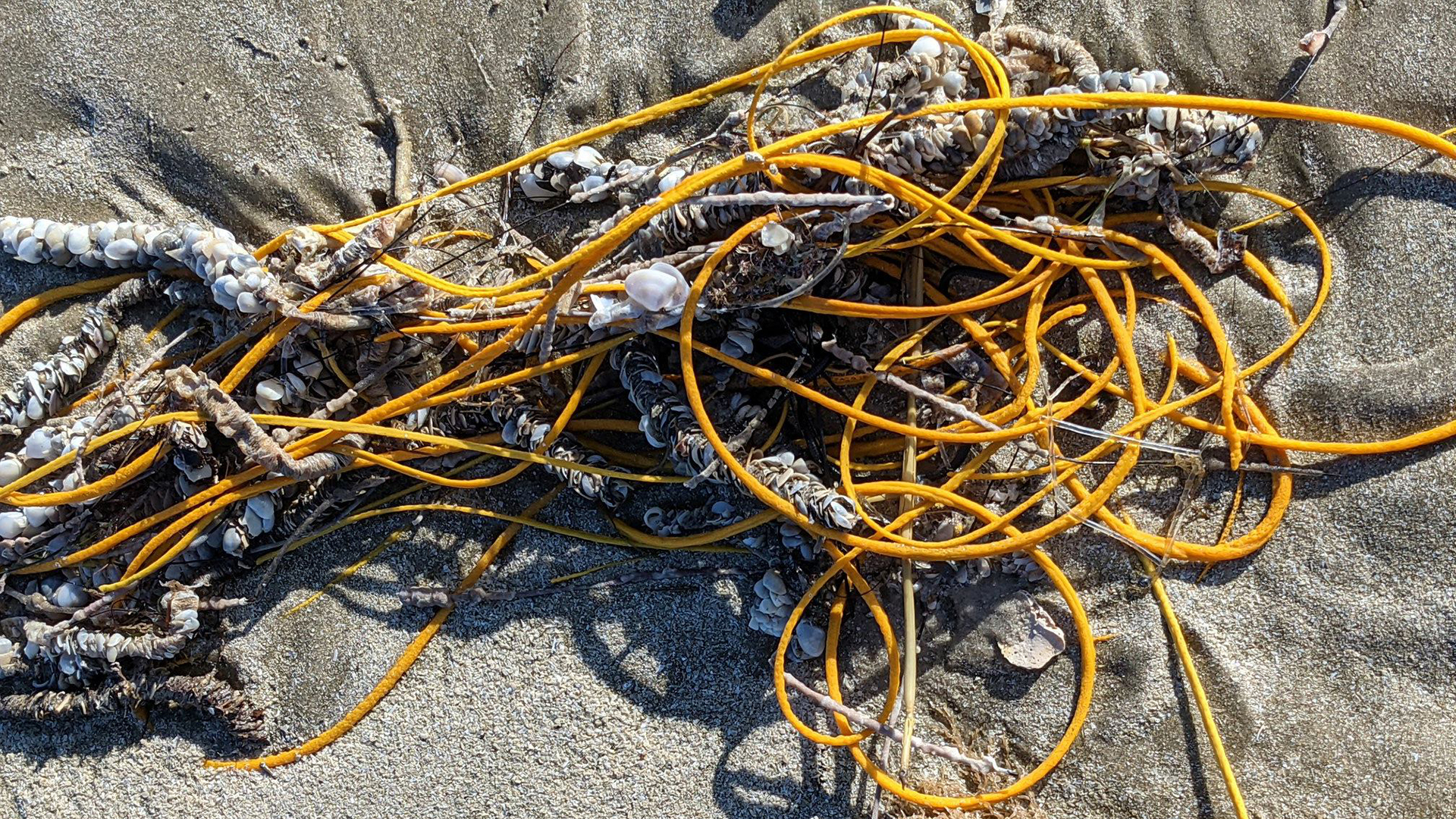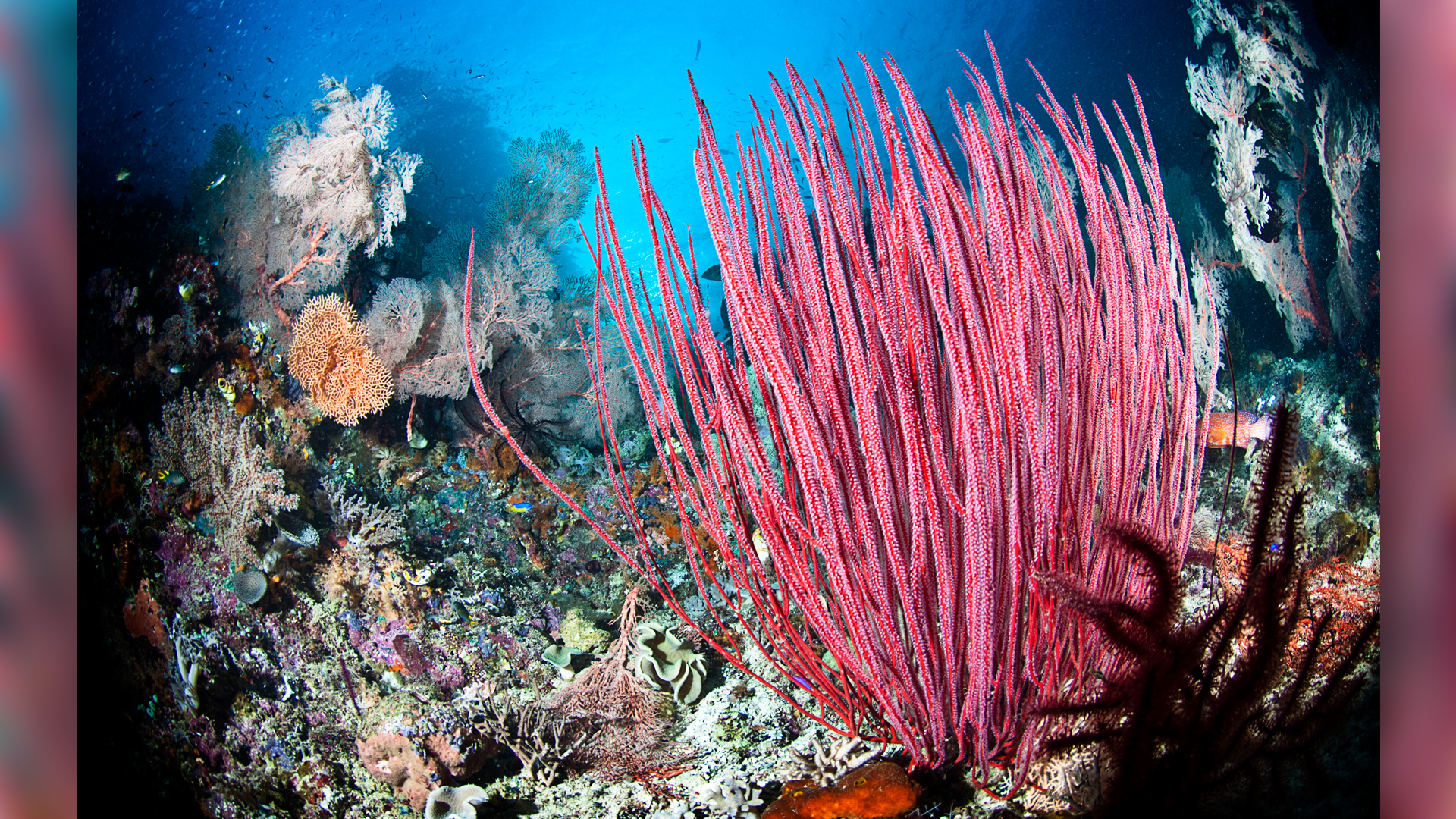'Pile of rope' on a Texas beach is a weird, real-life sea creature
What looks like garbage is a type of colorful coastal coral.

A tangled mass of what looked like discarded yellow rope recently washed up on a beach in Texas. But this peculiar knotty pile wasn't garbage. It was a colorful sea whip — a type of soft, flexible coral.
Rebekah Claussen, a National Park Service (NPS) guide at the Padre Island National Seashore near the Gulf of Mexico, found one of these "rope balls" partly buried in the sand, and the park shared her photo on Facebook on Feb. 1.
Sea whips can be red, yellow, orange, violet, lavender or purple, according to the Marine Species Identification Portal. However, "we mostly see the yellow and red varieties washing up on our beaches," NPS representatives wrote in the Facebook post.
Related: 13 bizarre things that washed up on beaches
The term "sea whip" can refer to several genera of soft corals in the order Gorgonacea, but the species that washes up in North American coastal regions is a colorful sea whip (Leptogorgia virgulata). Sea whips' vibrant color comes from colonies of polyps — tiny, soft-bodied animals with eight tentacles forming a ring around their mouths. When these colonies cluster together they secrete proteins that form a dark-colored skeleton, which branches into whiplike stalks measuring up to 3 feet (0.9 meters) tall, according to the Tybee Island Marine Science Center (TIMSC) in Georgia.
Colorful sea whips live close to the shore, and L. virgulata can be found in waters as far north as New Jersey and as far south as the Gulf of Mexico, according to TIMSC. Polyps feed on plankton, and sea whips typically cling to ledges made of rock and limestone at depths between 10 and 66 feet (3 and 20 m), according to the Smithsonian Marine Station at Fort Pierce in Florida.
World of Animals Annual: $22.99 at Magazines Direct
The animal kingdom is a fascinating, beautiful and complex world, but it faces an uncertain future. In the past few years, we’ve seen Japan resume whaling and scientists warn that the next decade could prove pivotal for the Earth’s environment and its inhabitants. This annual explores some of the threats faced by 25 of the world’s most endangered creatures and meets the animals that owe their continued existence to the vital Endangered Species Act of 1973.

But when sea whips are torn from their ocean habitats and deposited on beaches, they're easy to mistake for discarded fishing line, nets or cable. Several people who commented on the Facebook post mentioned that they had encountered sea whips while cleaning up a local beach, and they mistakenly collected it, thinking that it was garbage.
Sign up for the Live Science daily newsletter now
Get the world’s most fascinating discoveries delivered straight to your inbox.
"Generally speaking, most of it is dead when it washes up," Claussen told Live Science in an email. "To my knowledge, the reason that the coral has washed up is that it has broken off and therefore no longer alive. I'm not sure that you would be able to tell even if it was alive," she added. "We recommend just leaving the sea whip on the beach because it is natural and will decompose and help the island," Claussen said.
"So the next time you're out for a stroll on the beach, look for the sea whip and remember, it's not trash!" NPS representatives wrote in the post.
Originally published on Live Science.

Mindy Weisberger is an editor at Scholastic and a former Live Science channel editor and senior writer. She has reported on general science, covering climate change, paleontology, biology and space. Mindy studied film at Columbia University; prior to Live Science she produced, wrote and directed media for the American Museum of Natural History in New York City. Her videos about dinosaurs, astrophysics, biodiversity and evolution appear in museums and science centers worldwide, earning awards such as the CINE Golden Eagle and the Communicator Award of Excellence. Her writing has also appeared in Scientific American, The Washington Post and How It Works Magazine. Her book "Rise of the Zombie Bugs: The Surprising Science of Parasitic Mind Control" will be published in spring 2025 by Johns Hopkins University Press.










